ScreenFonts: Blackthorn, Martha Marcy May Marlene, In Time, The Rum Diary, Puss In Boots
I am publishing this episode of ScreenFonts over the weekend because I leave for Beyond Tellerrand in Düsseldorf, Germany tomorrow. You will be able to follow my live reporting in my Twitter stream.
Last week I stumbled upon the post Thirteen Movie Poster Trends That Are Here to Stay and What They Say About Their Movies on the celebrity gossip journal Oh No They Didn't. The title pretty much sums it up – thirteen mosaics each composed of very similar movie posters identify as many trends and analyse the message they aim to convey. Shortly afterwards I found out that the original source of these compilations (and more) actually is the French film-distributor-by-day / blogger-by-night Christophe Courtois. His blog Le Sibère Carnet de Christophe Courtois is a "refreshing notebook of strange, amusing and futile anecdotes". In our email exchange this weekend Christophe stressed he discusses recurring themes in film poster design not because he thinks they are lazy solutions, as some sites who re-appropriated his collections suggest. On the contrary these designs betray a perfect mastery of cinematographic communication, and help the films they advertise reach their intended audience. It was reassuring to discover that, no, I am not alone. Similarly to my research into posters for romantic comedies using horizontal bands, big red text for comedies, Trajan in movie posters and so on, other people are also intrigued by recurring themes in movie poster design. And guess what – this episode incorporates two examples of one of the trends described by Christophe Courtois. Neat…
As much as I revile the disgusting exploitive drivel it advertises, I must admit the movie poster for the The Human Centipede II (Full Sequence) does a perfect job. It translates the revolting subject matter into a quietly disturbing piece of commercial art. When it comes to horror movies I prefer by far the delayed shock effect. Instead of having viscera smeared into his or her face, the viewer is presented with an image that at first sight looks aesthetically pleasing, yet upon closer inspection reveals details that make your skin crawl. Extremely effective.
The movie logo is set in a custom-fragmented version of Trajan, which has become the de facto standard for thrillers, horror and gore movies.
Even better is the teaser poster which achieves a sublime balancing act between Eros and Thanatos. The line to crass commercialism and cheap exploitation is so painfully thin yet never crossed. It's amazing how Art Machine, A Trailer Park Company managed to elevate this intellectually hollow cinematic garbage to a chillingly sensuous image of – dare I say – almost Mapplethorpe-esque beauty.
Sometimes all it takes is careful image editing. On the Tutorial: The Worn/Weathered/Stamped Look to learn how to achieve this look.
The posters for The Mighty Macs are a bit of a mixed bag. The version on the left is a god-awful commercial non-event, with both actresses' faces airbrushed into oblivion. The one on the right does the "mosaic of images in silhouette" thing. It's not exactly great, but the blue tinted photographs in the track suit against the pristine white background work somewhat better, especially with the movie title being an extension of that photograph, complete with lens flare.
Although the film is "An Inspiring True Story", it doesn't use the obligatory several figure sets, small caps, alternate character shapes, an extended ligature set, swashes and so on. Plus Paul Hunt's interpretation is not sandpapered-to-death like the "standard" digitisation.
This alternate poster proves you never should be biased in typography – or in any other aspect in life for that matter. I am not the biggest fan of Americana, yet it works very well in the context of this design. The combination of the crisp black letters with the black bands and the almost monochrome photograph of Carla Gugino intruding into the central white band add up to an attractive poster.
Martha Marcy May Marlene has a surprisingly Modernist (and very beautiful) movie poster, down to the pristine white background and all type set in simple black Helvetica. Elizabeth Olsen peers at the viewer through the shape of an unidentified capital "M"…
… which is replaced by a QR code in these alternate versions. Bar codes have long been elevated to graphic devices in design, so it's only logical that the new QR codes with their mysterious mosaic-like patterns would follow the same route. In all three posters the contrast of the subdued skin tones and the colour of hair and eyes contrasting against the virginal white background is gorgeous.
Veering away from the almost clinical Modernist style, this alternate poster features a dream-like image of poetic beauty. The double exposure of the photograph creates an intriguing silhouette composed of sensuous lines. Having all text in the lower left area is an unconventional solution that is perfectly adapted to the topography of the image. The geometric sans is the classic ITC Avant Garde Gothic.
From dream to nightmare, the movie poster for Cargo visualises the anguish and despair of victims of human trafficking with sombre, damaged photography, distressed graphics – stylised tire tracks? – blocking the lead actress' mouth, and hand drawn type. The distressed stencil typeface used for the tagline is Octin Spraypaint.
And from despair to hope – Elevate documents the extraordinary personal journeys of four particularly tall West African Muslim teenage boys with NBA dreams, from a basketball academy in Senegal, to the high-pressure world of American prep schools. The poster is straightforward and efficient. All the information about the movie is encapsulated in a simple, bold design in the colours of the Senegalese flag. Black arms reach upwards, out of the confines of the African continent, towards a basket ball, with a star situating Senegal on the map.
I think the movie title in stencil letters was custom designed. The chunky design does fun things with the character shapes, and plays with the spacing and dimension of the letters to achieve a striking word shape.
The movie poster for the Revenge of the Electric Car brilliantly spoofs cheesy horror and gore movies. Playing off the fact that the documentary recounts the figurative return from the dead of the electric car, it employs typical grindhouse imagery with a sprinkle of zombie flavour, down to the trademark "folded and worn poster" finish. The lightning bolt is not only a metaphor for the electricity the car runs on, it also is a tongue-in-cheek reference to the Frankenstein mythos where the monster is brought to life when it is struck by lightning. The splashes of motor oil – the engine's life blood – on the movie title in Interstate – the highway alphabet –, the menacing headlights, and the post-apocalyptic setting all add to the foreboding atmosphere. And what better typeface to spell out "Gas" in bold red letters than Roger Excoffon's quintessential French display sans Banco? (Please disregard Phill Grimshaw's sacrilegious light weight.)
This poster is so much better than the designs for the original documentary Who Killed the Electric Car? On the one hand the "film noir" version is a half-hearted, unconvincing attempt which strands between vintage pulp literature graphics and slick modern design. The standard extra bold compact sans Impact doesn't really help. On the other hand the conventional documentary poster incorporates too darn many ideas, making the confusing end result fall short. The typeface here is ITC Avant Garde Gothic.
Anyone expecting child-friendly airbrushed perfection in candy colours for Being Elmo: A Puppeteer's Journey, think again. The ballsy movie poster is an extreme-contrast black-and-white photograph in three bold flat colours – the signature red of Elmo's fur, his orange nose and white eyes. The movie title is set in Monotype's Abadi Condensed, a sans whose style is situated halfway between humanist designs like Gill Sans and the stricter (neo)-grotesques like Helvetica and Univers.
No, if you want airbrushed perfection the teaser poster for In Time comes pretty close. Justin Timberlake and Amanda Seyfried, dark and monochrome grey save for the glowing green numbers on Justin's fore-arm, ooze sensual cool. The clever type composition in all caps Neue Helvetica Extended reminds me of bar codes and serial numbers.
The contrast couldn't be any more brutal. I really don't like what the Photoshop "artist" did to Johnny Depp's face in the main poster for The Rum Diary, but this teaser poster gives an accurate representation of what the audience can expect from this film. Instead of plastering Depp's very bankable face all over the design, it focuses on the drunken madness and mayhem. And what a surprise – the poster features two typefaces I never expected to see again on a movie poster: graphic design icon Neville Brody's classic FF Typeface Six, backslanted, and Dogma Script, one of the lesser known designs of digital type icon Zuzana Licko.
By far the most interesting of the collaterals is this teaser poster which spells out the movie title in mini-bar bottles of alcoholic beverages. As far as I can see there was no Photoshop involved here, just good-old fashioned manual arrangement. Like many of the commentators on the Internet Movie Poster Awards website remark, it's the male / booze edition of the lovely teaser poster for Eat Pray Love. The supporting typeface is URW's digitisation of Cloister Old Style.


Does the teaser poster for Puss in Boots look familiar? Most viewers will immediately recognise its satirical take on the classic Clint Eastwood pose for the Oscar-winning Western Unforgiven. However Christophe Courtois proves there are many more – he gathered a fair number of similar posters which all show the protagonist from the back, the head held sideways, often in darkness and holding a weapon.
And this episode even has a second example of this style – cleverly playing off the movie title the poster for Anonymous only shows the character from the back, thus keeping his identity obfuscated. The classic serif face is Granjon.
I've singled out this last poster for Like Crazy not for the lovely photography nor the type – H&FJ Gotham again if you were wondering – but for the typesetting conundrum it presents. The four lines composing the tagline are each made up of exactly the same amount of letters and spaces, so the obvious way to go was to stack the lines so the individual letters would line up vertically. However Gotham is a poor choice for this specific solution – as it is a design with generous, square proportions the difference in width between characters like the 'W' in the top line and the 'L' in the third is quite big. To make it even more difficult the first and last word in each line is identical, so only one four-letter word is available for compensating for the differences in character width. To make it work the designer had to resort to what I call "elastic spacing", resulting in very awkward kerning of the 'WA' in the top line and tracking that is way too loose in the 'MISS' in the bottom line. A monospaced design or one with a narrow 'W' would have been much more appropriate for this design.





















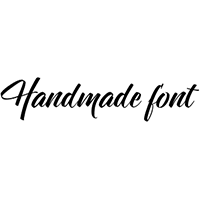


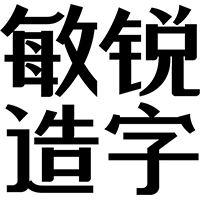
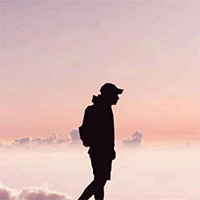

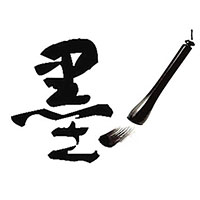





 闽公网安备35010202000240号
闽公网安备35010202000240号